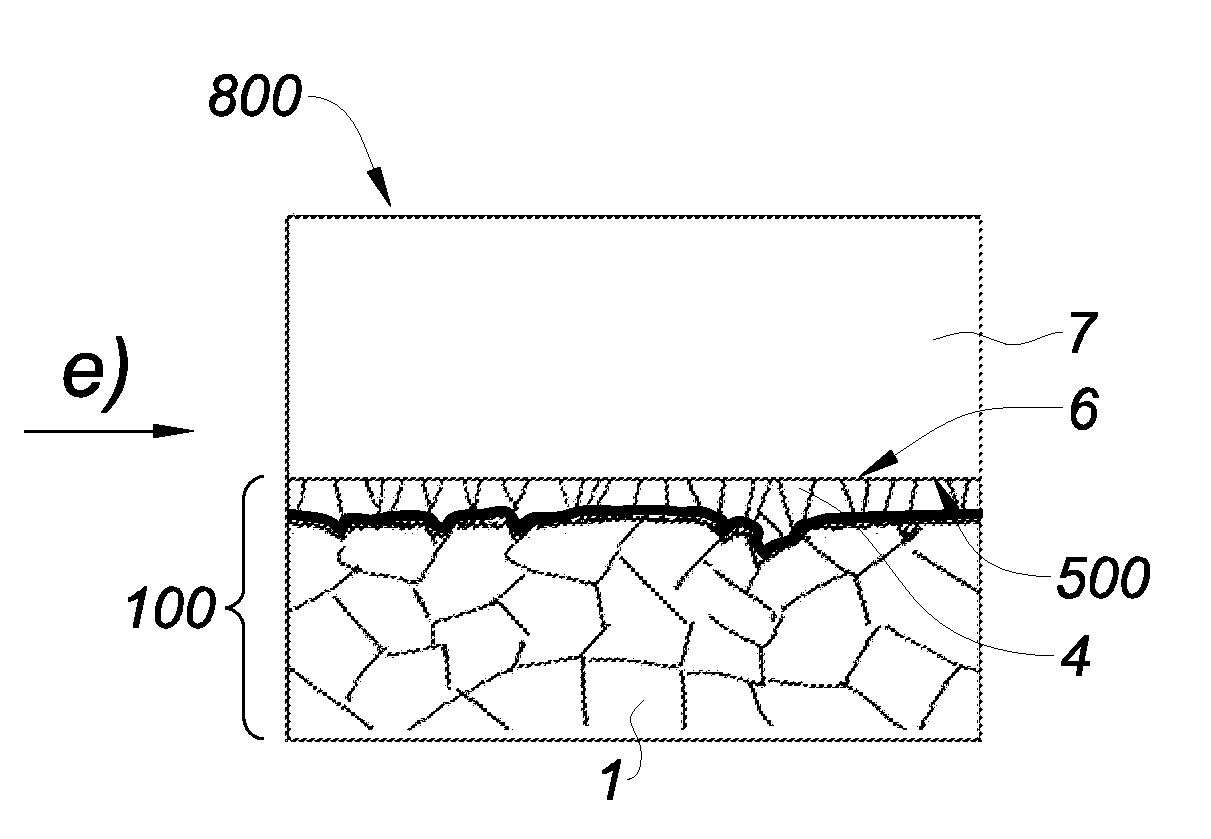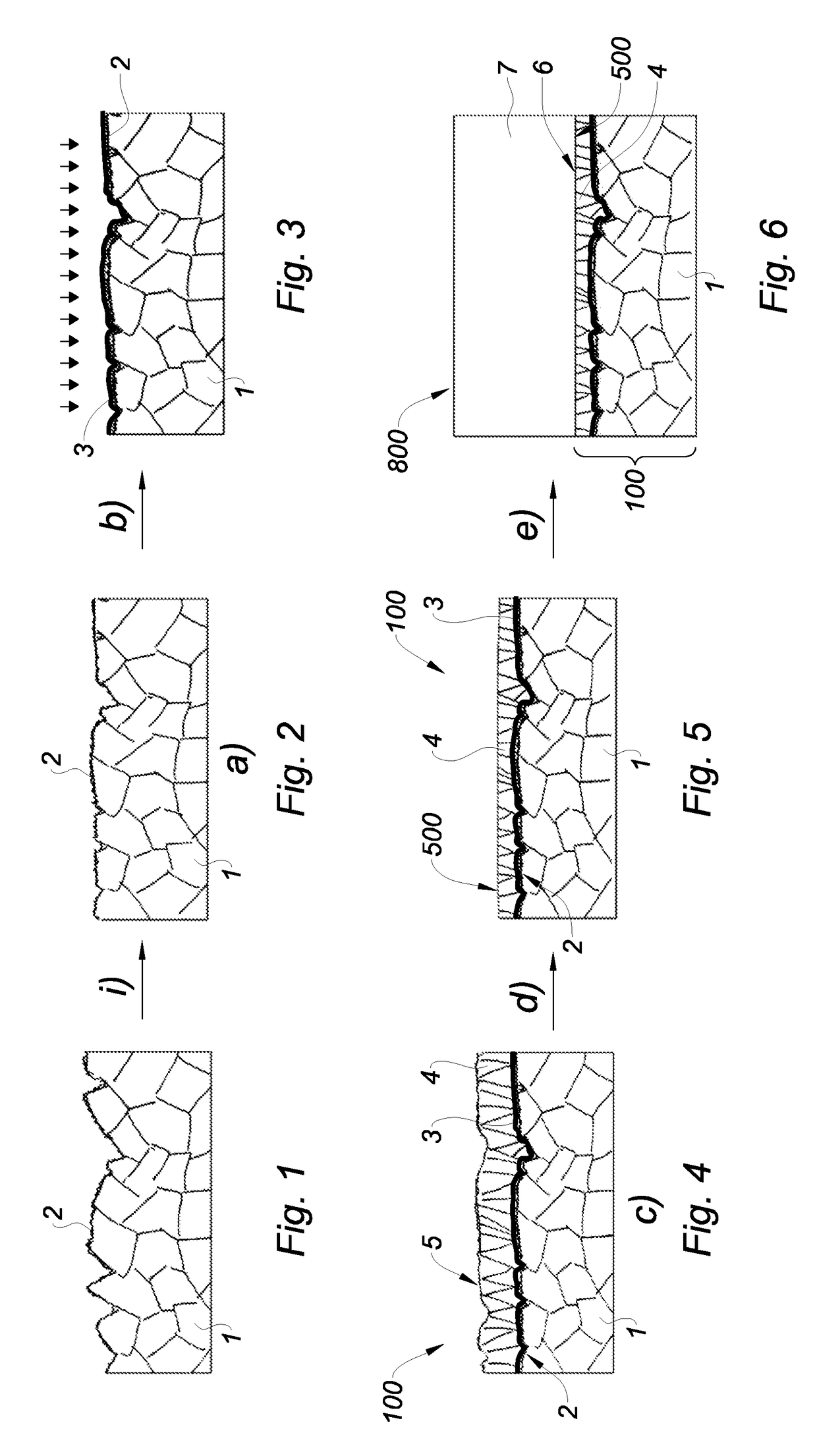Method for obtaining a bonding surface for direct bonding
a technology of direct bonding and bonding surface, which is applied in the direction of transportation and packaging, basic electric elements, solid-state devices, etc., can solve the problems of high cost, inability to use in numerous applications that involve components based on semiconductor materials, and material gain at the expense of sintered substrate quality, so as to reduce the prime cost
- Summary
- Abstract
- Description
- Claims
- Application Information
AI Technical Summary
Benefits of technology
Problems solved by technology
Method used
Image
Examples
Embodiment Construction
[0054]FIG. 1 illustrates a solid metallic base substrate 1 made of sintered molybdenum, whose base surface 2 presents a RMS roughness comprised between 20 and 30 nanometers over a 5*5 μm2 field and a PV roughness comprised between 150 and 250 nanometers measured by optical interferometry over a 100*100 μm2 field. These characteristics correspond to the typical characteristics of sintered substrates that are currently in the market.
[0055]More generally, the base substrate 1 may be formed of a sintered refractory metal such as molybdenum, tungsten, tantalum, rhenium or niobium and an alloy of these metals.
[0056]FIG. 2 illustrates the step i) of the method which consists in performing a mechanical polishing on the base surface 2, for example with an aqueous solution of diamond on an abrasive pad. The RMS roughness of the base surface 2 obtained after this polishing is comprised between 2 and 6 nanometers, the PV roughness of the base surface 2 is comprised between 25 and 100 nanometers...
PUM
| Property | Measurement | Unit |
|---|---|---|
| PV roughness | aaaaa | aaaaa |
| PV roughness | aaaaa | aaaaa |
| PV roughness | aaaaa | aaaaa |
Abstract
Description
Claims
Application Information
 Login to View More
Login to View More - R&D
- Intellectual Property
- Life Sciences
- Materials
- Tech Scout
- Unparalleled Data Quality
- Higher Quality Content
- 60% Fewer Hallucinations
Browse by: Latest US Patents, China's latest patents, Technical Efficacy Thesaurus, Application Domain, Technology Topic, Popular Technical Reports.
© 2025 PatSnap. All rights reserved.Legal|Privacy policy|Modern Slavery Act Transparency Statement|Sitemap|About US| Contact US: help@patsnap.com


